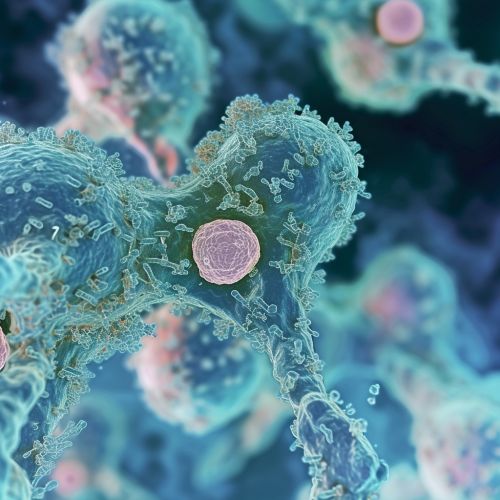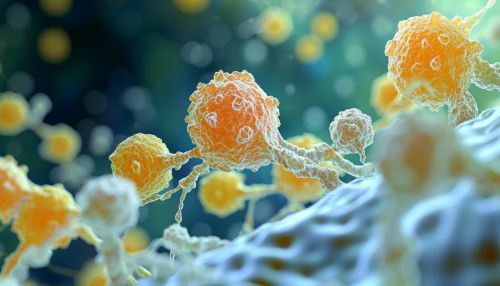Interleukin-2 receptor
Overview
The Interleukin-2 receptor (IL-2R) is a type of protein found on the surface of certain cells in the immune system. It is a part of the cytokine receptor family and plays a crucial role in regulating the body's immune response. The receptor is composed of three different subunits: alpha (CD25), beta (CD122), and gamma (CD132).


Structure and Function
The IL-2R is a heterotrimeric protein complex that is expressed on the surface of certain immune cells, including T cells, B cells, and natural killer cells. The receptor is composed of three different subunits: alpha (CD25), beta (CD122), and gamma (CD132). Each of these subunits contributes to the overall function of the receptor and plays a unique role in the immune response.
The alpha subunit (CD25) is primarily responsible for binding to the cytokine Interleukin-2 (IL-2). This subunit is not necessary for signal transduction, but it increases the affinity of the receptor for IL-2. The beta (CD122) and gamma (CD132) subunits, on the other hand, are involved in signal transduction. These subunits contain motifs in their cytoplasmic domains that are necessary for signaling.
The primary function of the IL-2R is to bind to IL-2 and initiate a signal transduction pathway that leads to the activation of immune cells. This is a critical process in the immune response, as it allows the immune system to respond to foreign antigens and pathogens.
Role in Immune Response
The IL-2R plays a crucial role in the immune response by regulating the activation and proliferation of T cells. When a foreign antigen is detected in the body, antigen-presenting cells (APCs) present the antigen to T cells. This interaction triggers the expression of IL-2 and the high-affinity IL-2R on the surface of the T cells.
The binding of IL-2 to the IL-2R initiates a signal transduction pathway that leads to the activation of the T cells. This activation allows the T cells to proliferate and differentiate into effector T cells, which are capable of directly attacking the foreign antigen. In addition to its role in T cell activation, the IL-2R also plays a role in the survival and proliferation of B cells and natural killer cells.
Clinical Significance
Due to its crucial role in the immune response, the IL-2R is a target for several therapeutic interventions. For example, drugs that block the IL-2R are used to prevent organ rejection in transplant patients. These drugs work by inhibiting the activation of T cells, thereby preventing an immune response against the transplanted organ.
In addition to its role in transplantation, the IL-2R is also a target for cancer immunotherapy. Some forms of cancer, such as certain types of leukemia and lymphoma, express high levels of the IL-2R. Drugs that target the IL-2R can be used to kill these cancer cells or to enhance the immune response against the cancer.
